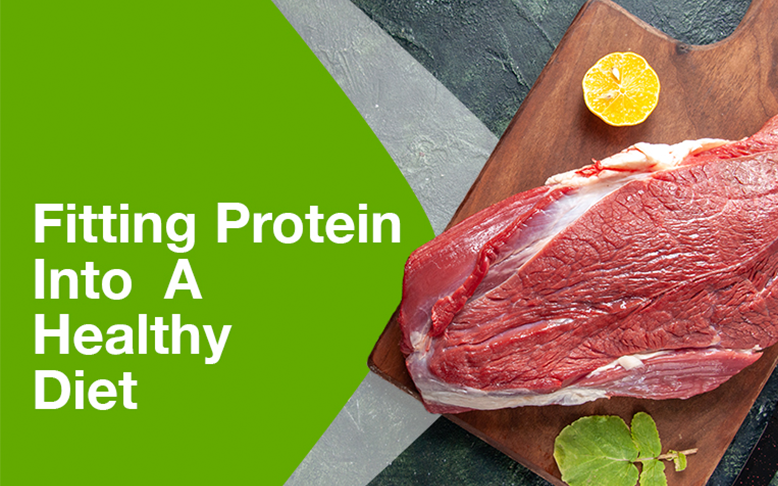What’s the Deal with Your Diet?

A significant topic on the occurrence of chronic diseases, which are linked to poor diet, is the contribution of advanced glycation end-products (AGEs). Many modern diets contain not only high amounts of fat, sugar, and salt, but also potentially harmful compounds known as advanced glycation end-products. What’s more, the way we cook our foods can elevate the AGEs in our diet. Accumulation of AGEs in the body over time may cause harmful effects to the body.
Here, learn what AGEs are, their formation, and how they contribute to the development and progression of many chronic diseases.
What are AGEs?
Advanced glycation end-products, also called glycotoxins, are a heterogeneous complex group of compounds formed through a non-enzymatic reaction of the carbonyl-group of reducing sugars and free amino groups in proteins, lipids, or nucleic acids.1,2 This reaction is called the Maillard or browning reaction.1,3
What are the Sources of AGEs?
AGEs are formed inside the body, but they can also be found in the foods we eat.
- Endogenous AGEs - The body inherently produces AGEs as it processes dietary sugars, which is part of the normal metabolic process to form AGEs.2,4,5
- Exogenous AGEs - AGEs also exist in foods. These AGEs are called dietary AGEs (dAGEs). Factors such as food processing, storage and cooking can contribute to the level of AGEs in foods.6
Generally, animal-based foods that are rich in protein and fat contain high AGE levels in their uncooked forms1,6 and tend to form new AGEs during cooking.1 Meat-derived products processed at high heat are major sources of dAGEs.1,6 Higher fat and aged cheeses, butter, margarine, cream cheese, and mayonnaise also contain high amounts of dAGE.1 Vegetables, fruits, whole grains, and milk have relatively low levels of dAGEs even after cooking.1

Consumption of dAGEs contributes largely to the body AGE pool.1 Approximately 10% of dAGES is absorbed in the gastrointestinal tract of which one-third is excreted in the urine, and the remaining is accumulated inside the body.6,7
What Causes New AGE Formation in Food?

The level of AGEs in food can increase due to the influence of high temperatures used in cooking, such as roasting, grilling, baking, broiling, and frying.
Foods exposed to higher temperatures and lower moisture levels yield higher dAGE levels compared to foods prepared at lower temperatures or with more moisture.1 Boiling and steaming do not contribute to the increased formation of dAGEs.,1-5
What are the Implications of AGEs to Health?

Normally, AGE formation in the body is a slow and regulated process. However, in some conditions, AGE formation is accelerated, for instance, during increased blood glucose level and increased oxidative stress.6,7,10 During one’s lifetime, AGEs accumulate in the body, especially in the skin.
Previous studies found that accumulation of AGEs in the body is closely related to the aging process and may contribute to age-related chronic diseases, such as complications of diabetes, hypertension, cardiovascular diseases, memory loss and chronic kidney disease.2,4,6-10 Some of the well-studied dAGEs in foods are Ne-(carboxymethyl) lysine (CML) , Ne-(1-carboxyethyl)lysine (CEL) and Nd-(5-hydro-5-methyl-4-imidazolon-2-yl)-ornithine (MG-H1).1,11-15
The pathologic effects of AGEs are related to their ability to induce oxidative stress and inflammation by binding to a wide range of differentiated adult cells including epithelial, immune, and endothelial cells through AGE-receptors or direct cross-linking to body proteins, altering their structure and function specifically increasing tissue stiffness (Figure 1).1,4,5,6
Figure 1. Schematic representation of AGEs formation and their biological effects (Adapted from Abate, et.al., 2015).
How are AGEs Detected?
A non-invasive method was developed and applied in various studies to determine AGE content in the body through skin autofluorescence (SAF).9,10 The SAF, a long-term biomarker for AGE build-up, was shown to be potentially associated with the burden of atherosclerosis and type-2 diabetes.4,9,10,16
How to Reduce Dietary AGE Intake?
- Try to reduce your consumption of high-AGE foods. Limit animal-derived foods from your diet as they contain higher dAGE levels than vegetables, fruits, whole grains and milk.
- Go for steaming and boiling your foods as these do not contribute to the increased formation of dAGES as compared to frying, grilling, or other dry, high temperature cooking methods
Figure 2. Some foods with high and low AGE levels (Based on data from Uribarri, et.al., 2010)
Conclusion
Though the concept of dAGEs is not yet discussed much in the nutrition practice in the country, it is about time that we understand the concept and see how we can include this in our field of practice. After all, some scientific evidence shows dAGEs are a contributory factor to the onset of diabetes and other chronic diseases.
Pro Tip
Food sources and cooking methods are integral factors to attain our nutrition and health goals.


 Robby Carlo Tan , RND, MSc
Robby Carlo Tan , RND, MSc














No comments here yet.